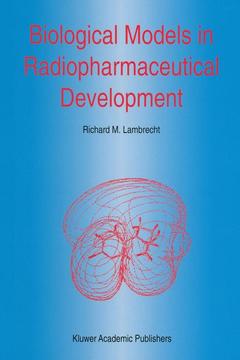Radiophannaceuticals labeled with short-lived radionuclides are utilized to unravel biochemical processes, and to diagnosis and treat diseases of the living body are-developed through extensive evaluation in ~iological models. 'fhC first attempt to compile information was a volume entitled ANIMAL MODELS IN RADIOTRACER DESIGN that was edited by William C. Eckelman and myself in 1983. The volume had a focus on the animal models that investigators were using in order to design radiotracers that displayed in vivo selectivity as measured by biodistribution and pharmacokinetic studies. A concern in the early days of nuclear medicine was species differences. Often a series of labeled compounds were evaluated in a several different animal models in order to gain confidence that the selected radiotracer would behave appropriately in humans. During the past 12 years there have been remarkable advances in molecular genetics, molecular biology, synthetic radiopharmaceutical chemistry, molecular modeling and visualization, and emission tomography. Biological models can now be selected that are better defined in terms of molecular aspects of the disease process. The development of high resolution PET and SPET for clinical applications facilitates the development of new radiopharmaceuticals by the use of models to quantitatively evaluate drug effects, and progression of disease, and hence to arrive at better diagnosis and treatments for animals and humans. With these advances there is an effective use of biological models, and the refinement of alternatives for the development of new radiophannaceuticals.




